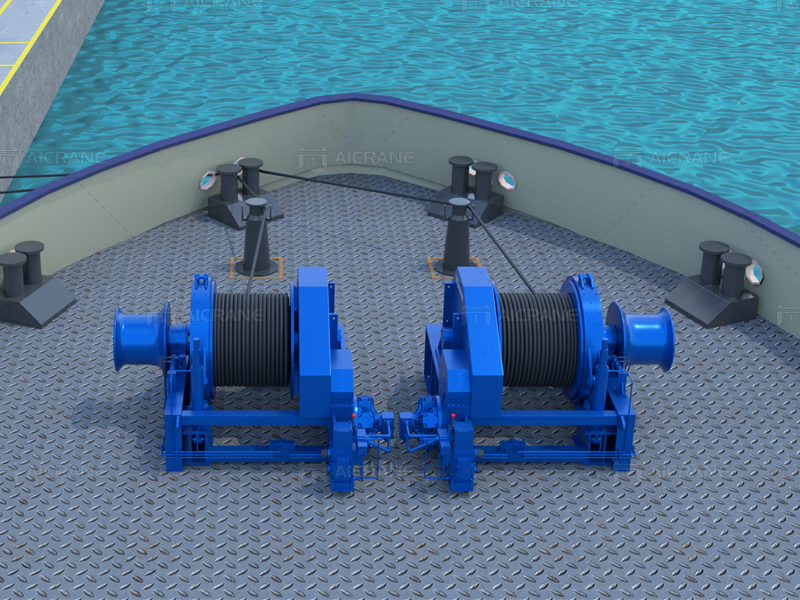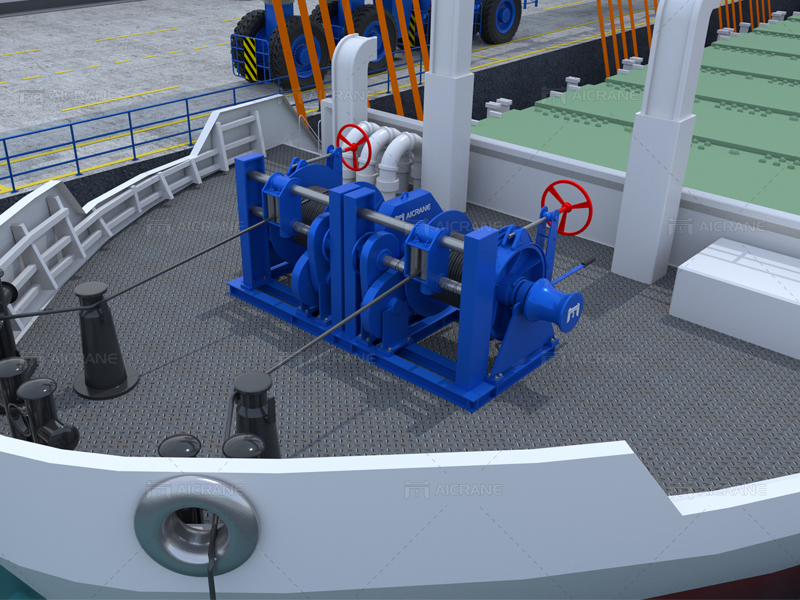In the maritime industry, the mooring winch stands as a critical component for safe and efficient vessel operations, playing a pivotal role in securing ships to docks or other structures. As shipowners and operators seek to enhance their vessels’ capabilities, the consideration of mooring winch prices becomes a crucial aspect of decision-making. This article delves into the key factors influencing mooring winch prices and how understanding these considerations can lead to informed choices in the acquisition of this essential marine equipment.

Capacity and Size:
The foremost consideration in determining mooring winch prices is the winch’s capacity and size. Different vessels require winches with varying capacities based on their size, weight, and the forces they are subjected to during mooring. Larger vessels with higher tonnage demand more robust and powerful winches, which consequently come at a higher price. It is essential to match the winch’s capacity with the specific requirements of the vessel to ensure optimal performance and safety during mooring operations.
Power Source:
Mooring winches can be powered by hydraulic, electric, or pneumatic systems. The choice of power source significantly influences the overall cost of the winch. Hydraulic winches, known for their reliability and high power output, are often more expensive due to the complexity of their hydraulic systems. Electric winches, on the other hand, are generally more cost-effective and easier to maintain, making them a popular choice for various vessels. The selection of the power source should align with the vessel’s operational needs and budget constraints.
Material and Construction:
The materials used in the construction of mooring winches directly impact their durability, reliability, and, subsequently, their price. High-quality materials, such as marine-grade stainless steel or corrosion-resistant alloys, contribute to the winch’s longevity and performance in harsh maritime environments. While these materials may increase the initial cost of the winch, they often result in long-term cost savings through reduced maintenance and replacement expenses.

Braking System:
The braking system is a critical safety feature in mooring winches, preventing the uncontrolled release of tension and ensuring the stability of the vessel during mooring. The type and quality of the braking system influence the overall cost of marine winch. Advanced braking systems with features like automatic tension control and emergency release mechanisms may command a higher price, but they provide an added layer of safety and operational control.
Automation and Control Features:
Modern mooring winches often come equipped with advanced automation and control features, enhancing efficiency and ease of operation. Automated tension control, remote operation capabilities, and integrated monitoring systems contribute to smoother mooring processes. While these features can increase the upfront cost of the winch, they may lead to cost savings over time by reducing the manpower required for mooring operations and minimizing the risk of human error.
Certifications and Compliance:
Compliance with international standards and regulations is paramount in the maritime industry. Mooring winches that meet or exceed industry certifications and safety standards may come at a higher price due to the additional engineering and testing required for compliance. However, investing in certified winches ensures that they adhere to stringent safety and performance criteria, contributing to the overall reliability and legal compliance of the vessel.
Supplier Reputation and Support:
The reputation of the mooring winch supplier plays a significant role in pricing considerations. Established and reputable suppliers often provide higher-quality products, reliable customer support, and comprehensive warranties. While products from reputable suppliers may come with a higher initial price tag, the long-term benefits in terms of reliability, after-sales support, and reduced downtime can outweigh the upfront costs.
Installation and Maintenance:
The total cost of ownership includes not only the initial purchase price but also installation and maintenance expenses. Some mooring winches may require specialized installation procedures, and ongoing maintenance costs should be factored into the overall budget. Understanding the installation and maintenance requirements of a mooring winch model is essential for making informed decisions about its total cost of ownership.
Conclusion:
Navigating mooring winch price considerations involves a careful balance between upfront costs, long-term benefits, and the specific operational needs of the vessel. Shipowners and operators must prioritize safety, reliability, and compliance while considering budget constraints. By understanding the factors influencing mooring winch prices, stakeholders can make informed decisions that lead to the acquisition of reliable and cost-effective equipment, ultimately contributing to the efficiency and safety of marine operations. Interested in these machines, contact Aicrane today.